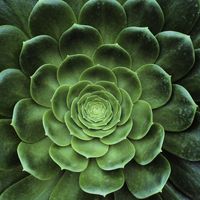Peas And Root Knot Nematodes – A Guide To Pea Nematode Resistance

There are many types of nematodes, but root knot nematodes tend to be most troublesome, primarily because they attack such a wide range of crops. The worms are microscopic, but they cause big problems when they infest roots and prevent plants from absorbing nutrients and water. To narrow it down even further, there are several species of root knot nematodes. The type in your garden may vary from your neighbor’s garden, depending on the vegetables you grow. Different nematodes have different preferences. This article discusses the pea root knot nematode.
Peas and Root Knot Nematodes
Are peas affected by root knot nematodes? Unfortunately, root knot nematodes of peas are common, especially in sandy soil. What can you do about peas with root knot nematodes? It’s not possible to eradicate the pests once they take up residence in your soil, but you can keep them under control. Identifying root knot nematodes of peas is tricky because the symptoms – lumpy, swollen, knotty roots, are similar to nitrogen nodules, which occur naturally on the roots of peas and other legumes. The main difference is that nitrogen nodules are easy to pull off with your fingers; nematodes stick like glue and can’t be removed. Other symptoms include poor growth and wilted or discolored leaves. If you still aren’t sure your local Cooperative Extension office can perform a soil test, usually at a nominal cost.
Controlling Root Knot Nematode of Peas
One of the easiest and most effective ways to control root knot nematode of peas is to grow nematode-resistant peas. Experts at a local greenhouse or nursery can tell you more about pea nematode resistance in your area. Work generous amounts of compost, manure or other organic material into the soil and mulch pea plants well. Practice crop rotation. Planting the same crop in the same soil year after year can produce an unhealthy buildup of nematodes. Plant peas as early as possible to get ahead of the problem. Till the soil frequently in spring and summer to expose the pests to sunlight and air. Solarize soil in summer; till the garden and water it well, then cover the soil with clear plastic for several weeks. Plant marigolds, which produce chemicals that are toxic to nematodes. One study indicated that planting an entire area thickly with marigolds, then plowing them under, provides good nematode control for two or three years. Interspersing marigolds among pea plants doesn’t appear to be as effective, but it may be worth a try.
Sign up for the Gardening Know How newsletter today and receive a free copy of our e-book "How to Grow Delicious Tomatoes".

A Credentialed Garden Writer, Mary H. Dyer was with Gardening Know How in the very beginning, publishing articles as early as 2007.